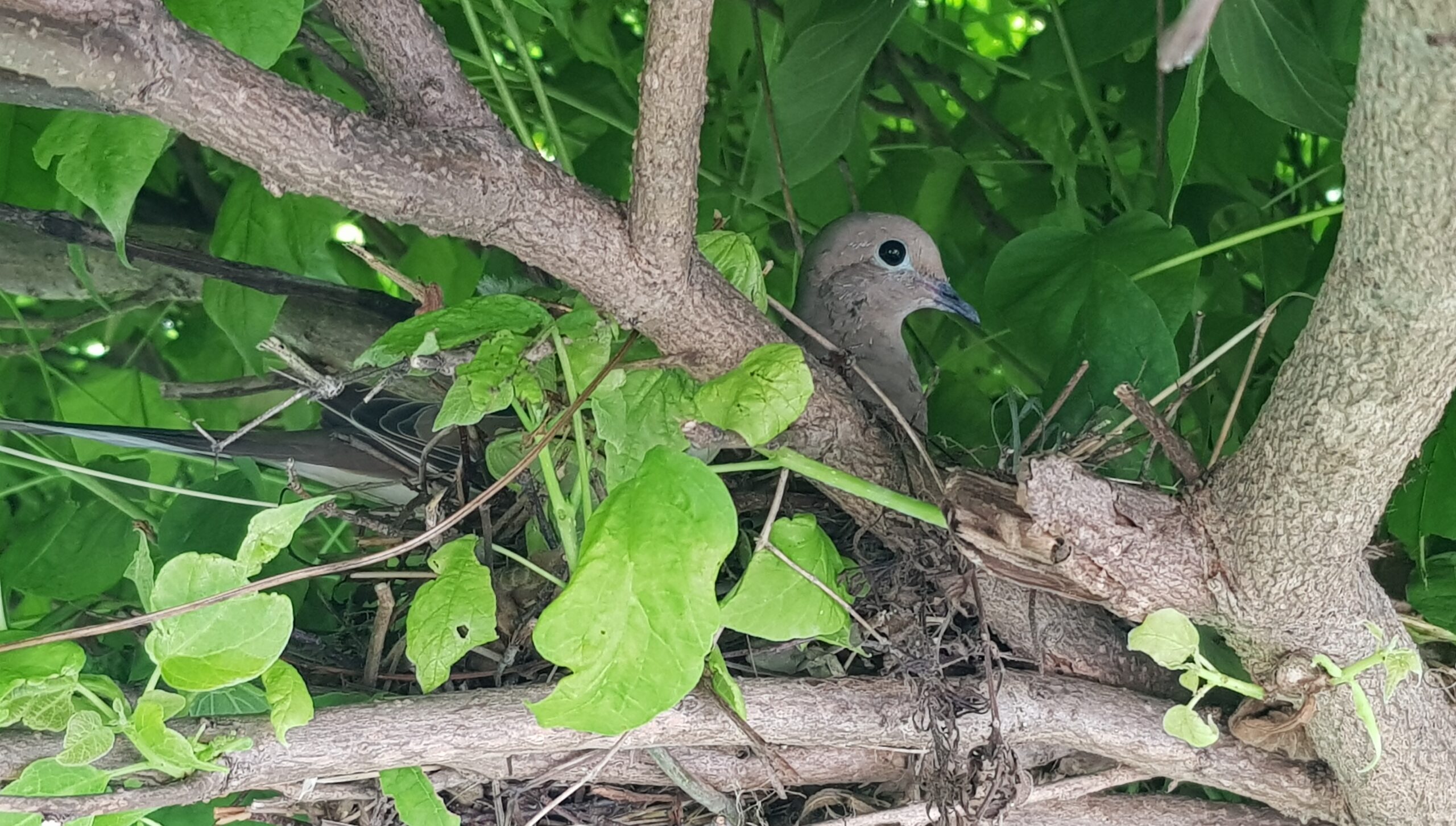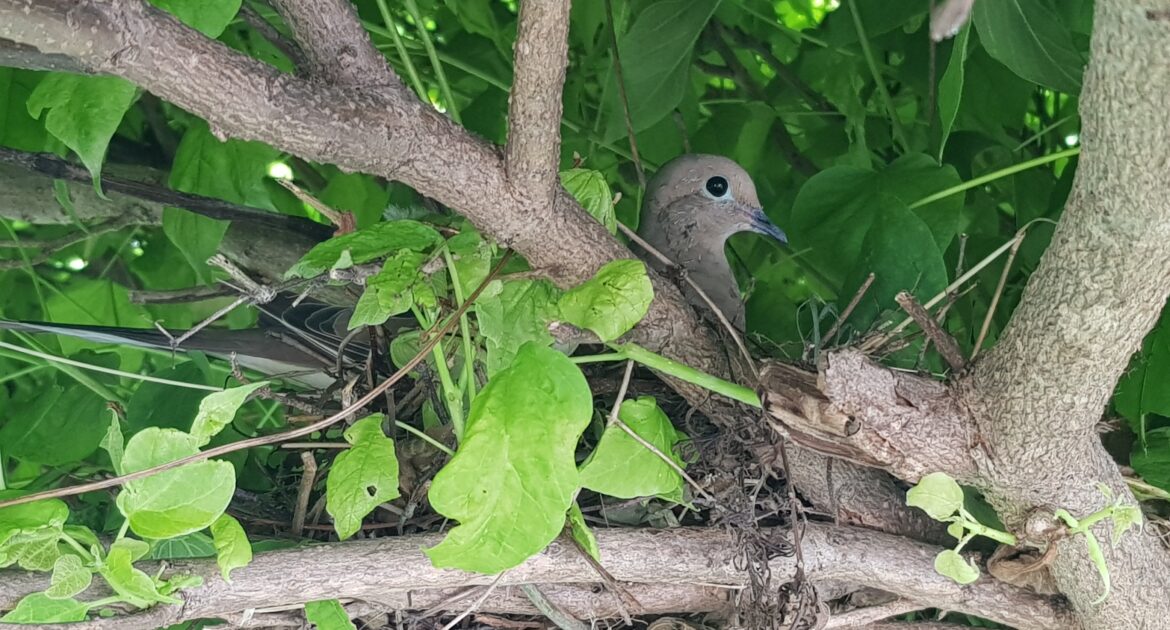Finding out why birds nest in eaves is more than just a curiosity for homeowners—it’s an essential aspect of property maintenance. While the sight of nest-building can feel like a symbol of nature’s charm, the potential outcomes can be less endearing, especially when bird mites find their way into your home.
If you’ve been asking yourself, “Should I remove bird nest from house eaves?” or “What does it mean if a bird builds a nest on your house?” you’re not alone. Many homeowners are unaware of the risks of leaving these nests unchecked, particularly when it comes to the tiny, almost invisible invaders they can bring along. Follow along with our experts in Hamilton bird removal as we discuss the dangers of birds nesting in or around your home or business.
What Birds Nest in Eaves?
Various bird species are attracted to small, sheltered crevices like the overhangs of eaves. Common examples include pigeons, sparrows, swallows, and starlings. These particular species find the narrow gaps and hidden spaces in eaves ideal for laying their eggs and raising their young because these locations provide a level of protection from predators and the elements. While birds are a marvel of nature, their nesting habits in such close proximity to human homes can bring unintended consequences.
One of the primary issues with birds nesting in eaves is that their activities often go unnoticed until significant signs of damage or infestation appear. Birds nesting in eaves can damage insulation, wiring, and wooden structures. Their droppings are corrosive and carry potential health risks, contributing to unsanitary conditions surrounding the nesting area.
Even so, the mere presence of nests isn’t the biggest issue. The more insidious danger is what comes along with them—parasites like bird mites. These tiny pests inhabit the nests and feed on the birds, but the situation becomes far more problematic when they migrate into your living spaces, searching for new hosts. This is especially true after the birds leave the nest, leaving mites without a food source and sending them creeping into your rooms.
The Risks of Birds Nesting in Eaves
The biggest issue with birds nesting in the eaves of your home is their ability to indirectly affect your living space. Bird mites, for instance, are not often discussed but pose a real threat. These minuscule parasites, barely visible to the human eye, thrive in nests. While they primarily feed on their bird hosts, bird mites will opportunistically bite humans in search of sustenance if their primary food source is absent. Their bites can leave behind itchy, red marks that become highly irritating, and the sheer number of mites that can invade an area makes it a formidable challenge.
Another problem is the structural damage that tends to accompany nests in eaves. Birds often bring debris, such as twigs, leaves, and grasses, to create a secure home. Over time, accumulation of these materials can block drainage in gutters, which may lead to water damage, mold growth, or even weakened structural integrity. The weight of some nests can cause strain on the eaves or roofing, especially if multiple nests are present at once.
Lastly, droppings from birds carry harmful pathogens like Salmonella and Histoplasma, which can become airborne in the form of spores. This dangerous material can contribute to respiratory issues, especially when droppings accumulate in poorly ventilated attic spaces. Once airborne, these pathogens can infiltrate your HVAC system, spreading contaminants throughout the entire property—an often-overlooked hazard that only adds to the already escalating risks.
Why Removing Nests Without Professionals is Problematic
If you’ve considered trying to handle this situation yourself, it is important to proceed with caution. Many homeowners think, “Should I remove bird nest from house eaves myself?” and proceed without realizing the risks involved in tackling this problem solo.
First and foremost, it’s essential to understand the legal protections around some nesting bird species. Laws like the Migratory Bird Treaty Act of 1918 restrict the removal of active nests containing eggs or chicks for certain species, making unauthorized removal illegal. Attempting to clear these nests without fully knowing the regulations can lead to unintended legal consequences. Protecting wildlife is both a legal and ethical obligation, especially when humane alternatives are available.
There’s also the risk of worsening a bird mite infestation. Without proper containment strategies, disturbing a nest can release a wave of mites into your house as they scatter in search of a new host. This can make a manageable problem much worse, transforming an outdoor annoyance into a full-blown indoor issue.
Beyond the legal and pest infestation risks, there’s also the matter of exposure. Attempting a DIY removal can leave homeowners exposed to harmful droppings or contaminated nesting material without the proper safety gear and expertise. These materials can harbour harmful bacteria or fungi, posing a risk to health. Professional wildlife removal experts possess the necessary equipment and knowledge to handle these materials safely while minimizing risks to both property and personal well-being.
The Importance of Humane Practices in Wildlife Management
At Skedaddle, we’ve encountered countless situations where homeowners underestimated the complexity of removing nests from their eaves. Each removal requires not just expertise, but also humane practices that respect wildlife while protecting your home. We approach every situation with a deep understanding of animal habits and behaviour, ensuring the safety of both people and animals. This is especially important when managing cases involving bird mites and other pests.
Our process is designed to address the root cause of the problem, providing solutions equipped to prevent re-infestations. We don’t just remove the nest—we also decontaminate the area, repair any damage, and implement measures to keep birds from nesting in the same location again. Our combination of expertise and industry-leading humane practices sets us apart. When you call Skedaddle, you’re ensuring your home becomes a safe, mite-free haven without compromising on respecting wildlife.
Choose Skedaddle for Reliable Wildlife Control Services In Hamilton
When it comes to choosing a wildlife control service, reliability and experience make all the difference. That’s where Skedaddle excels. With decades of experience in humane wildlife removal, we understand how to handle the challenges of bird nests and their associated risks, like bird mites. We provide comprehensive solutions that address the immediate problem while preventing future issues.
Our trained team uses humane and eco-conscious methods that comply with local and federal regulations. We offer peace of mind to homeowners, ensuring an efficient, long-lasting solution tailored to your specific situation. The transparency in our process means you’ll understand every step taken to safeguard your property. Professionalism, efficiency, and humane practices are the cornerstones of what we offer.
Protect Your Home Today
Allowing birds to nest in the eaves of your Hamilton home can lead to significant challenges. From structural damage to health risks posed by bird mites, the problem goes well beyond what meets the eye. But handling this issue doesn’t have to be overwhelming. Turning to professionals ensures that the work is done safely, ethically, and effectively.
If you suspect birds are nesting in your eaves or are concerned about potential bird mites invading your space, act now. Reach out to Skedaddle and take the first step toward safeguarding your home and ensuring the problem is handled with care. Protect yourself and your loved ones—Skedaddle has the expertise and solutions you can trust.




